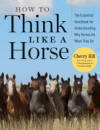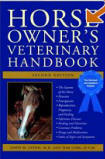|
Equine Kingdom Riding Academy
is no longer in operation. These more than 2,000 unique pages are provided for historical and educational reference. |
||
|
|
||
- Karabakh - |
|||
|
The Karabakh horse developed in Azerbaijan of the former U.S.S.R., in the upland area between the Araks and Kura rivers. The Karabakh is another breed of mountain horse that has adapted well to its harsh environment. They are believed to have evolved through the crossbreeding of the Akhal-Teke, the Persian, Kabardin, Turkmene, and Arabian. In more recent years, there has been a large infusion of Arabian Racing blood, which has greatly helped the Karabakh's speed and agility. Like all mountain breeds, the Karabakh is extremely surefooted and is able to travel at speed over rough terrain. They are seemingly resistant to disease and have an excellent constitution. They are a small horse with a wiry frame, which belies their strength and toughness. However, it would seem that their small stature ahs rather counted against them, and the breed is now in serious decline. Numbers of the Karabakh were initially devastated in 1826 by the Iran raids and, after this, they were considered too small to make satisfactory cavalry mounts. They are currently bred at the Akdam Stud in Azerbaijan, but most of the horses are Arabian and Karabakh crosses, not pure Karabakh. It would be a great shame for this breed to disappear - their qualities are many and they have frequently been exported to other countries to improve various breeds. They are extremely versatile riding horses and are hardy, strong, tough, and enduring. They also have very good temperaments, being calm, willing, energetic, and brave. In appearance, they have a finely made head, broad across the forehead and tapering to nostrils capable of major dilation. They have nicely proportioned conformation, with a long, muscular, and elegant neck, well set on quite upright shoulders, a deep chest, a straight back, and a sloping croup. The legs are quite long and fine, but are very strong, although the joints are somewhat small. The feet are extremely tough and hard. they are invariably quite narrow through the body and not very deep through the girth, which is an indication of the influence of the Akhal-Teke. The coat coloring is often an unusual metallic type of chestnut or dun with a darker mane and tail and a dorsal stripe. They can also be bay or gray, and white markings are allowed. In height, they stand between 14 and 15 hh.
|
|||
|



